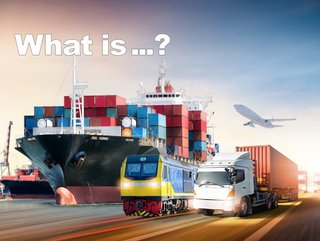
Logistics is about moving goods faster, cheaper, and more efficiently. The term derives from the ancient Greek word ‘logistikē’, which means ‘the art of calculating’. During the Roman Empire, ‘logistica’ was used to refer to the organising of supplies and quarters for troops.
Our modern understanding of logistics emerged during World War II, when the Allied and Axis forces used it to manage their supply chains and transport operations.
After the war, logistics became an important part of business and commerce, as companies realised the importance of efficiently managing their supply chains to remain competitive.
Logistics comprises a wide range of activities, from transportation and warehousing to inventory management and order fulfilment.
The following comprise the main component parts of logistics:
Transportation This is the process of moving goods from one location to another. It involves selecting the most efficient and cost-effective mode of transport, such as trucks, ships, planes, or trains.
Warehousing The process of storing goods before they are transported to their final destination. Warehouses are used to store raw materials, finished goods, and products that are in transit. They also provide value-added services such as packaging, labelling, and assembly.
Inventory management Inventory management involves managing the flow of goods and materials through the supply chain. This includes tracking inventory levels, forecasting demand, and ensuring that products are available when they are needed.
Order fulfilment Involves the process of receiving and processing customer orders. This includes picking and packing products, shipping them to the customer, and providing customer service.
Procurement The process of sourcing and purchasing raw materials, goods, and services. It involves selecting suppliers, negotiating contracts, and managing relationships with suppliers.
The evolution of logistics down the ages has been shaped by factors such as advances in technology, changes in consumer behaviour, and the growth of global trade. Here are some of the key factors to have shaped logistics:
Industrial Revolution The Industrial Revolution of the 18th and 19th centuries marked a significant turning point in the evolution of logistics. The introduction of steam power and mechanised transportation systems such as railroads and steamships enabled goods to be transported faster and more efficiently than ever before.
Mass production The mass production of goods in the early 20th century further accelerated the evolution of logistics.
The need to move raw materials and finished goods quickly and efficiently led to the development of modern transportation systems, such as trucks and aeroplanes.
The shipping container In 1956, a patent was granted to US logistics businessman, Malcolm McLean, for his ‘intermodal shipping container’. McLean’s invention would go on to revolutionise transport and international trade in the second half of the twentieth century. Containerisation led to massive savings on freight transport, by removing the need for multi-staged handling of individual cargo items, and cut inventory costs by shortening transit time. Containers also improved reliability and cargo security.
Today, there’s around 17 million shipping containers in use globally. The number of containers at sea at any one time is said to be roughly 5 million, while 200 million container trips are made every year.
Information technology The advent of information technology in the latter half of the 20th century revolutionised the logistics industry. The use of computer systems for inventory management, transportation planning, and tracking enabled logistics providers to streamline their operations and improve efficiency.
Globalisation The growth of global trade in recent decades has transformed the logistics industry. The need to move goods across borders and manage complex international supply chains has led to the development of specialised logistics services, such as freight forwarding and customs brokerage.
e-commerce The rise of e-commerce has had a significant impact on the evolution of logistics. The need to fulfil orders quickly and efficiently has led to the development of new technologies, such as automated warehouses and drones, and the adoption of new delivery models, such as same-day and on-demand delivery.






